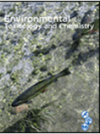Combined Effects of Interspecies Interaction, Temperature and Zinc on Daphnia longispina Population Dynamics

Scientific abstract
Under natural conditions, organisms can experience a variety of abiotic (e.g. temperature, pH) and biotic (e.g. species interactions) conditions, which can interact with toxicant effects. By ignoring species interactions conventional ecotoxicological studies (i.e. single species tests) oversimplify the actual field situation. Here, we investigated whether temperature and interspecific competition affected the effects of zinc on a Daphnia longispina population. The D. longispina populations were exposed in a full factorial design to three different zinc treatments (background, 29 µg Zn/L and 110 µg Zn/L), two different temperature regimes (cold: 17-18 °C and warm: 21-22 °C) and two interspecific competition levels (No interspecific Brachionus competition= no Brachionus calyciflorus added; interspecific Brachionus competition= B. calyciflorus added). Interspecific Brachionus competition and temperature by itself had a limited effect on the Daphnia abundances, but significantly interacted with the highest Zn concentration. Without Brachionus competition the D. longispina juvenile and adult abundances under warm conditions were up to 5.5 and 21 times lower in the high Zn treatment in comparison with the Zn control, whereas under cold conditions no significant Zn effect was observed. However, with Brachionus competition the highest Zn treatment was on average 2.2 times less toxic to the D. longispina juvenile abundances at higher temperatures. Under cold condition the highest Zn treatment affected the juvenile abundance sooner and up to 9 times more negatively when simultaneously faced with Brachionus competition. Possibly, the competition for food reduced the amount of energy that could be used by D. longispina for reproduction, when the metabolic costs increased due to Zn stress. The present study clearly illustrated the influence of temperature and competition on the effects of a chemical stressor. Thus, not considering such factors in ecological risk assessment may underestimate or overestimate risks in aquatic ecosystems, when extrapolating data from standard single-species tests to the field.
Full reference (link):
Van de Perre, D., Janssen, C. R. and De Schamphelaere, K.A.C. (2018), Combined Effects of Interspecies Interaction, Temperature and Zinc on Daphnia longispina Population Dynamics. Environ Toxicol Chem. Accepted Author Manuscript. doi:10.1002/etc.4115
